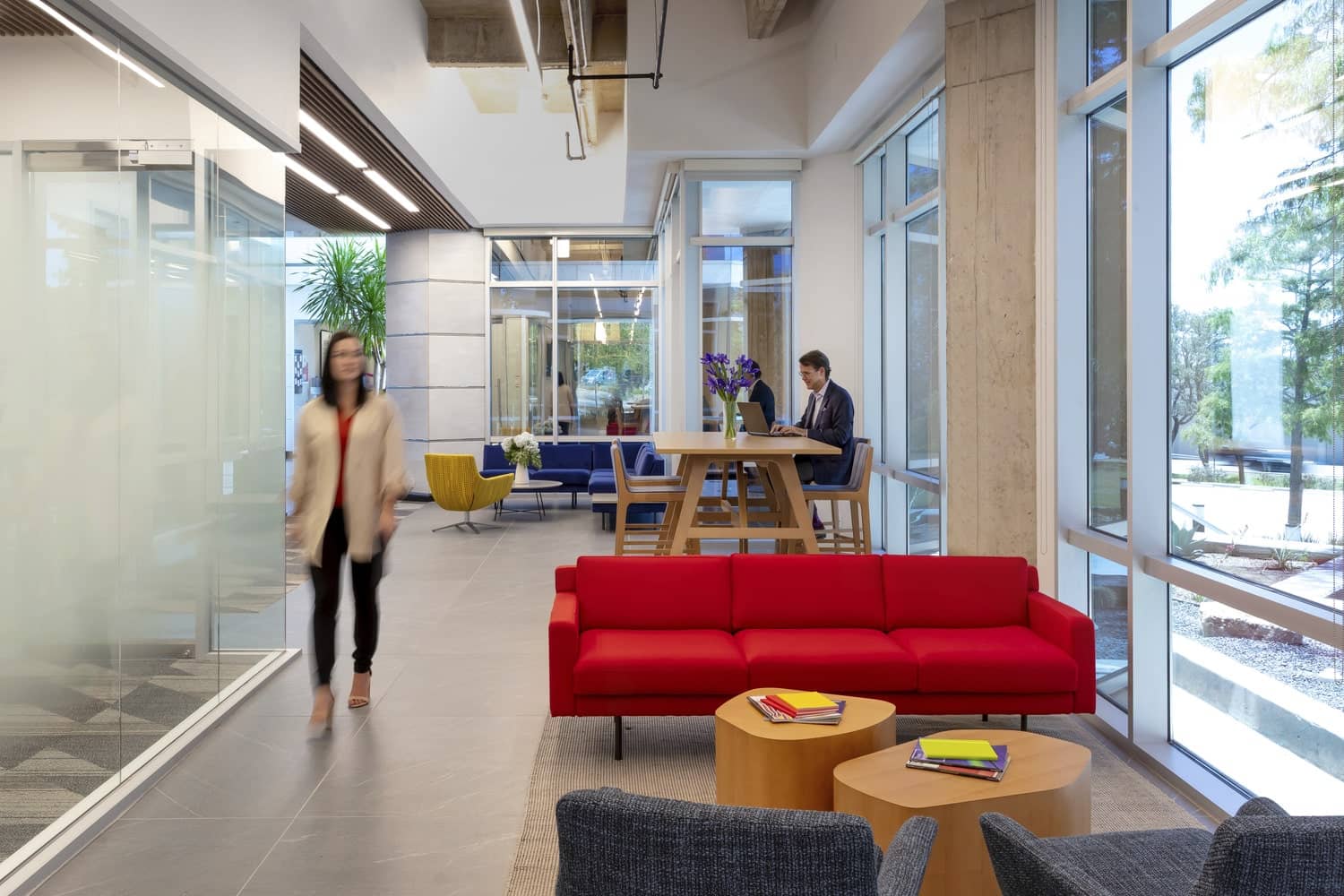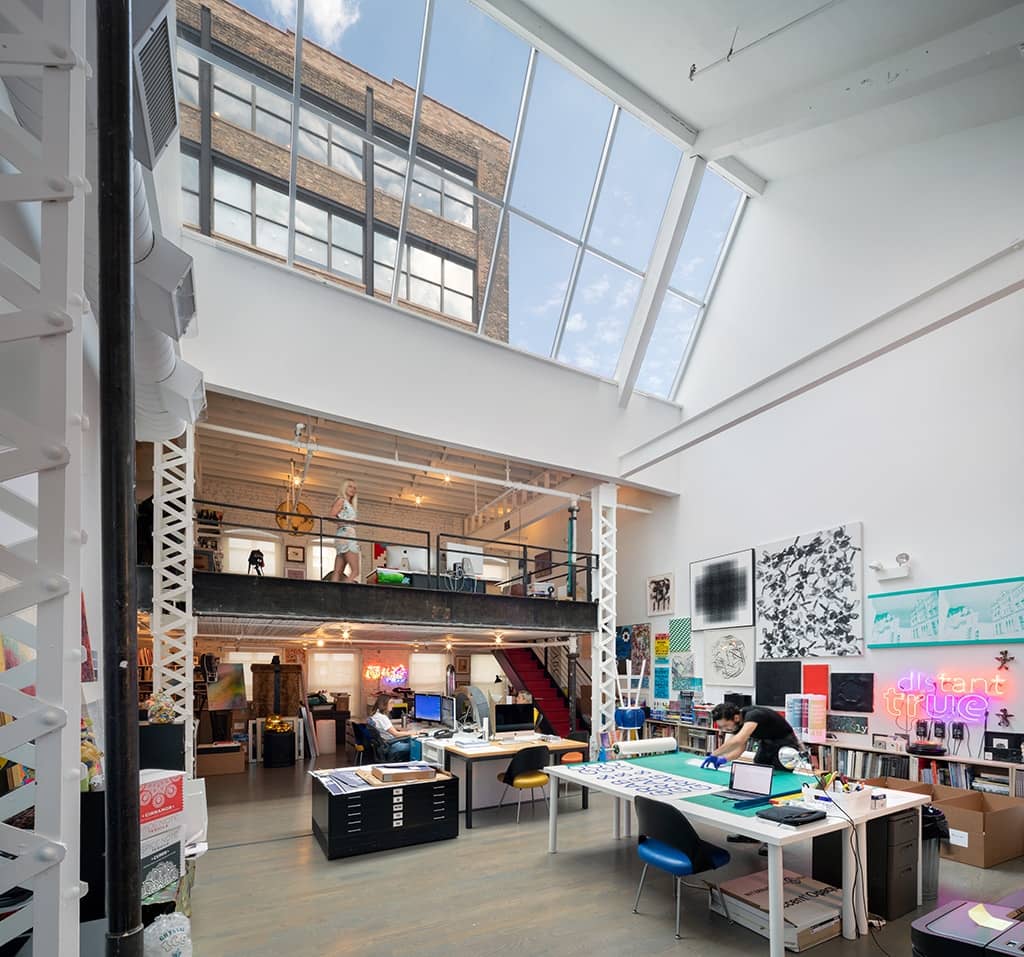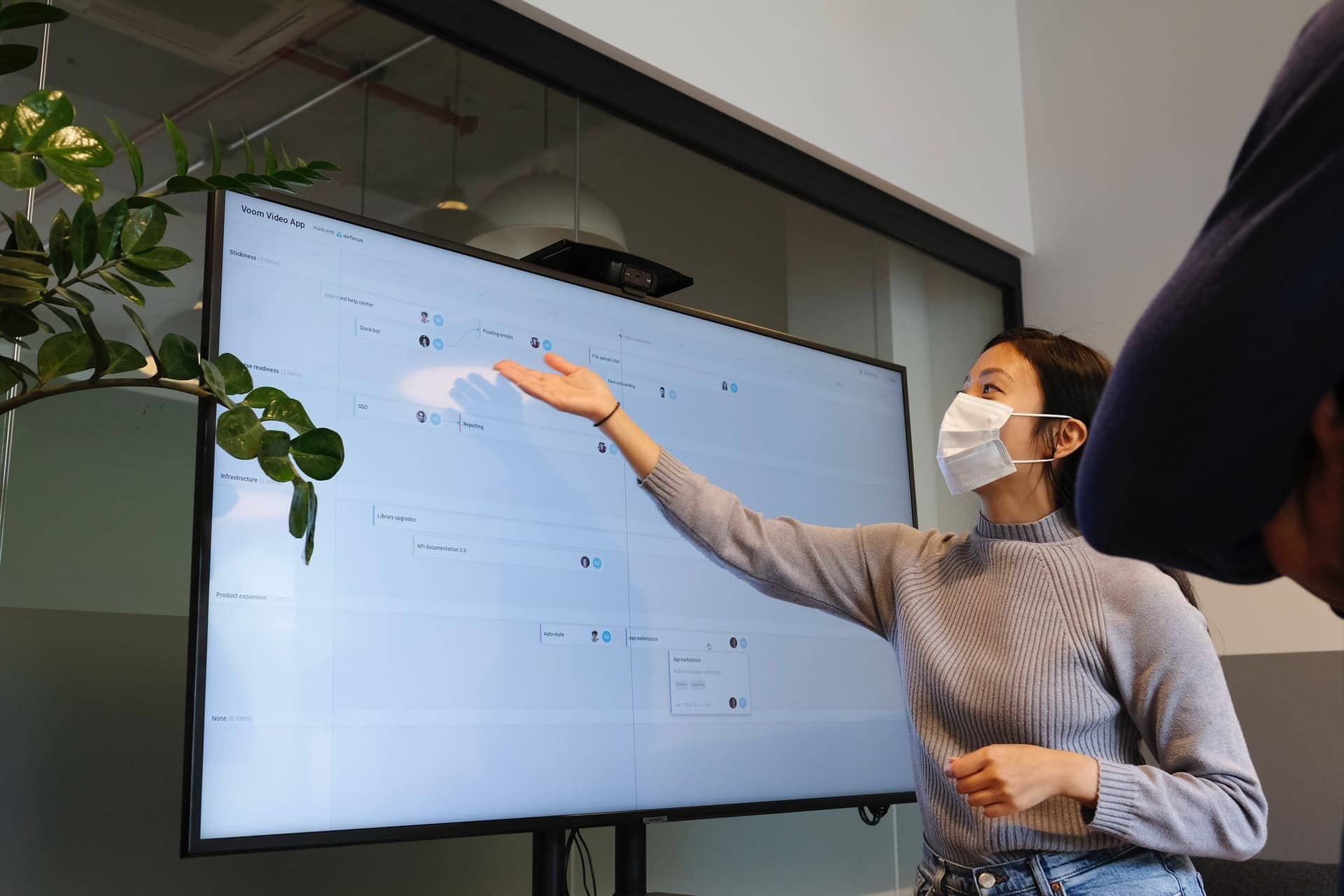In a post-pandemic world, expect smart buildings to become more relevant than ever before — with significant implications for CRE stakeholders. This article will offer a glimpse into KBS’ plans for innovation, explore different applications of smart technology within buildings, and identify what it means for visitors, tenants, property management, and property owners.
What is a Smart Building?
Let’s start with the basics. A smart building broadly refers to a property driven by the Internet of Things (IoT) technology that connects and streamlines operational systems/processes, eliminates redundancies and reduces human error. Think automation sensors, analytical software, and connectivity that all work together to make a building more intelligent and autonomous.
What’s a Smart Building’s Value?
The most important benefit of a smart building is that it speaks to the pain points of all stakeholders. For CRE property owners, smart buildings mean data; mining this data and putting it to work could move the needle for Net operating income (NOI), which calculates the potential profitability of income-generating real estate investments. According to Investopedia, NOI equals all revenue from the property, minus all reasonably necessary operating expenses. Why? Because the data is specific to a particular building, its tenants, and its systems. Using intelligent reporting, a CRE owner can better manage risk, make more strategic facility decisions, and enhance overall property performance. Notably, KBS cut approximately $47,000 in operating expenses at its Class A Towers at Emeryville near San Francisco via a new electric utility rate optimization tool by Gridium. The technology combines interval meter data with a proprietary rate engine to identify energy and operating cost savings — enabling buildings to claim utility bill credits from incorrect bills and to save money by switching to the optimal electric utility rate based on its own unique energy use profile. Smart tech also gives owners greater flexibility to adapt and comply with changing industry standards and regulations.
From a marketing and broker perspective, innovative technologies can differentiate a building in the marketplace, often commanding a premium over less sophisticated assets. Virtual property tours have also become more commonplace since COVID-19, as well as contactless contract negotiations.
There is also some revenue potential through a “data service” of sorts, where a tenant can buy property data for their own business purpose. This can be especially useful to retail tenants, for example, who can purchase data (such as mapping foot traffic) and use that information to strategically target customers.
Property managers perhaps stand to benefit the most from smart tech. Implementing self-diagnostic and self-correcting technologies can streamline antiquated practices, often delaying — if not eliminating — the need for human intervention. For example, visitor check-in and security and surveillance systems can be digitized with visual identification software, equipped with the ability to alert authorities. In many buildings, smart sensors are already heavily in use — primarily as motion-sensor lighting. But looking ahead, these sensors are revamping day-to-day building maintenance through various alerts, allowing management to take proactive steps to keep a property in tip-top shape. New tech advancements are also giving way to emergency response, such as measuring seismic activity ahead of earthquakes or signaling fire hazards.
Then there are the tenants. Health and safety are strong drivers in the smart-building revolution because tenants want greater control over their environment. In a sense, it’s becoming its own amenity:
- Sensors that monitor air ventilation (checks air levels and adjusts airflow accordingly)
- Smart parking (helps drivers locate available parking spaces or reserve a space)
- Touchless technologies (entering a building through motion sensors, digital key cards, fobs, etc.). For example, at Union Bank Plaza in downtown Los Angeles, KBS instituted a contactless visitor entry system with a touchless tablet at the security desk. The tenant enters visitor information as usual into the Angus work order system, but the difference is that the visitor is now emailed a QR code to scan when he or she gets to the building using their mobile phone at the touchless tablet. The QR code is accompanied by a COVID-19 self-assessment questionnaire that the visitor has to answer to enter the building prior to scanning their code
- Voice activated services
- Contactless amenities (food ordering service)
- Hyper-connectivity (interrupted power and Internet access to allow tenants to work where they want, how they want). Naturally, superior connectivity is also critical for office buildings and their tenants, and it helps draw companies back to the workplace after so many months of working from home. KBS has secured WiredScore certifications for a large portion of our assets, indicating that these properties meet the international standard for cutting-edge internet connectivity in office buildings. Most recently, the company secured WiredScore status for four assets in Texas. In addition to the four newly certified Texas properties, KBS owns WiredScore certified assets in Bloomington, Minnesota, the Washington D.C. metro area, New Jersey, Pennsylvania, Texas and California. Of these buildings, two are certified Platinum, 16 are certified Gold, 17 are certified Silver and one is Certified.
KBS has also implemented several air-quality initiatives within qualifying office buildings to help ensure cleaner air: installing V-Pac HVAC units in smaller spaces; upgrading air filters to block and capture 98% of air pollutants (viruses, bacteria, pollen, fine dust and more); utilizing ultraviolet germicidal irradiation filtration for HVAC service; and maximizing incoming airflow and building exhaust.
Smart buildings are an evolving business strategy, and KBS continues to create a culture of innovation and sustainability across its portfolio. Some industry pundits have even gone as far as calling smart buildings “future-proof profitability.” As we move forward, it goes without saying that CRE will become more creative using tech for the benefit of their business and their tenants. The question is: how far will we go?
Discover more about the future of technology in commercial real estate here.




